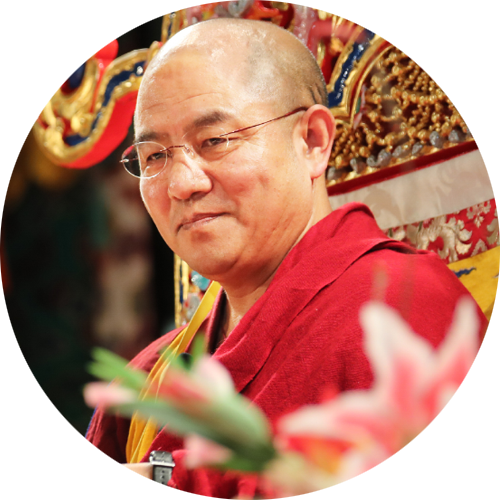Know Yourself
In the forecourt of the Temple of Apollo at Delphi is inscribed a very famous ancient Greek aphorism, “know thyself (know yourself).” Upon this, Socorates expounded that “the unexamined life is not worth living.” So, who on earth am “I”? Am I my identity? Am I the body? Am I the mind? Or am I the combination the two? Actually, following the reasoning in Buddhism, one will realize that the “self” can be found nowhere, neither in the body nor in the mind. If one realizes such a truth, one will then be free from the bondage of “I” and achieve enlightenment.
Why is Vipassana so crucial to us? This is not just a Buddhist doctrine or a certain traditional claim. I think it is easy for you to understand. When the mind is settled down in a sitting meditation, all disturbance from the external world cannot have an impact on you. But why can’t we maintain such a state in all activities in daily life? The answer rests in the secret of the mind. Why we can be free from disturbance when the mind is settled? What exactly the settled mind is? This is something you should probe into.
Before understanding the mind, we need to know who we are first. A very famous ancient Greek aphorism goes like this: “know thyself (know yourself)”. This famous motto was inscribed in the forecourt of the Temple of Apollo at Delphi. Many people think that it’s easy to know the self—“I am a doctor”, “I am a lawyer”, “I am a teacher”, “I am a pilot”, and etc.—thinking by knowing their identity, they have already got a full appreciation of the aphorism.
Others may regard the body as the “self”, the hairs as part of the “self”, or associate properties like car and house or family members with this “self”, believing that these constitute the meaning of “self”. However, these ideas need to be further investigated. These belong to “I”, they are “mine” but not “I”.
If I ask: who on earth is “I” or where is the “I”? You may find nothing beside this body. You can have a thought who are you exactly. Can you truly know yourself? Think about it. Almost everyone thinks “I” exist. From the perspective of appearance, Buddhism won’t deny the existence of “I”. Yet, the so-called “I” can hardly be found with thorough investigation.
Quite a large number of people believe “I” do exist: when allthese—my body and my mind—combine together, such a combination is “I”. But when we examine them separately, “I” actually cannot be found. If you cannot find “I” from each part, how can you find it when the separated parts are put together? For example, when each one of the five people has no money, how is it possible that money comes out when the five persons gather together? Thus the true inherent existence of “I” can be found nowhere when you analyze it deeply.
Therefore, the highest level of mediation is to know yourself. While also many might consider the mind as the “self”. Still, the existence of the mind also can be analyzed in a similar way. If the mind which is composed of the five sense consciousness and the mind consciousness exists, then in which part of the body do these consciousness dwell exactly? Through meticulous observation, you will find that they are to be found nowhere, neither in the upper or bottom part of the body, nor in the left or the right side of the body. And if you try to find the color, the shape and the nature of the mind, you cannot find anything either.
This analytical approach is very powerful. Especially when your anger arises fiercely, before observing, you may feel very uncomfortable and it seems like anger is exploding, bursting out of your mind. Yet when you examine where on earth is the anger residing, it cannot be found anywhere either inside, outside, or in the middle, upper or lower parts of your body. This conclusion can be proved by any ordinary people. Even a pupil can give the same answer by observing in this way. Indeed, no one can find the mind, then where can the anger and suffering reside?
If the mind is not something existent, then is it non-existent? Actually, it’s not either. Because existence and non-existence are interdependent concepts like the east and the west. If the existent mind cannot be established, then it’s also impossible to find a non-existent mind. So it’s equally unreasonable to think that mind exists as solid emptiness. It seems that some of you get confused. If the mind is neither existent nor non-existent, is it both existent and non-existent? Surely this cannot happen, since contradictory things can never co-exist. Something that is both existent and non-existent is called the third type of object which is paradoxical and would never happen. And there is also nothing that is neither existent nor non-existent.
Then, some may wonder what exactly the mind is. Actually it is hard to be described with language and it is beyond our conceptual thought. The nature of the mind is inconceivable. Once you come to recognize its inconceivable nature, you have attained the state of the enlightened beings.
